TL;DR:
-
Real government sites end in .gov.uk, anything else is fake.
-
DWP does not send mass group texts exposing strangers’ numbers.
-
They never need your card details and make a verification payment for benefits. Ever.
-
Scammers start with harmless info to build trust, then pounce on your money.
You know what’s worse than your phone battery hovering at 1% while you’re mid-episode of Star Trek: Lower Decks?
Getting a text that looks like it’s from the Government, telling you you’re about to lose £300 unless you act today.
That’s exactly the kind of scam currently doing the rounds, and it’s clever enough to trip people up, especially if you’re elderly, vulnerable, or simply desperate to keep the heating on. Let’s break down this scam step by step, so you know how to spot it and stop it.
The Setup – Low Battery, High Stakes
I’m minding my own business, boldly going where no man has gone before, when my phone buzzes with a “DWP Reminder.”
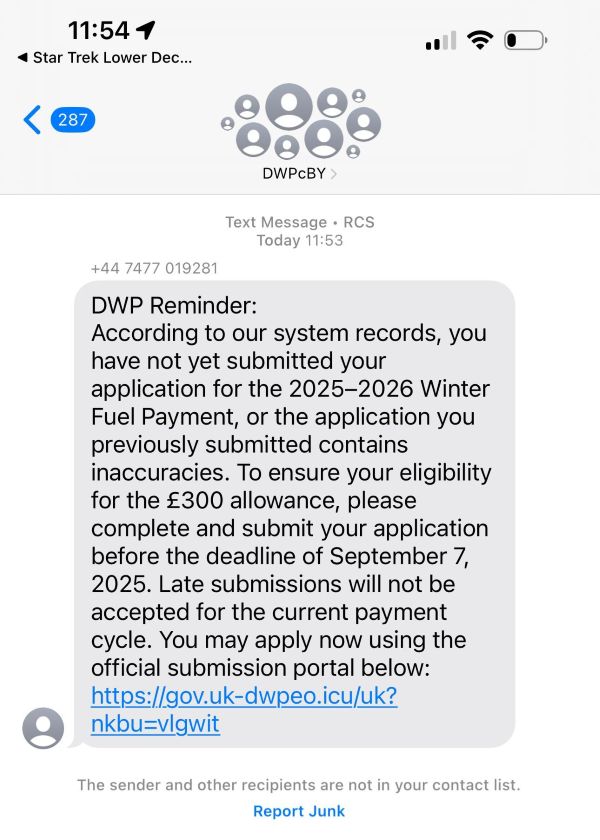
Already dodgy. The Department for Work and Pensions doesn’t send out random texts with high-pressure deadlines.
The Text Message of Doom
“Apply now or lose your £300 Winter Fuel Payment.”
Sounds urgent, right? That’s deliberate. Scammers love fake deadlines. It pressures you into acting before you’ve had time to think.


The message is sent to multiple people in one group chat. That means everyone’s numbers are exposed to each other. If this was genuine, it would be a colossal data breach. Spoiler alert: it’s not genuine.
And check that web address: https://gov.uk-dwpeo.icu
Looks sort of official, but it’s not. Real UK Government sites end in .gov.uk — nothing else.
Stranger Danger – 18 in One Group
Tap on the group details and you’ll see 18 random strangers lumped in together.
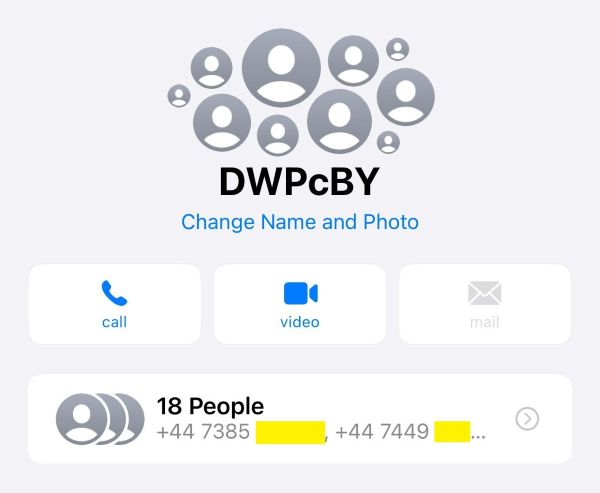
That’s not government comms, that’s a scammer firing a shotgun blast of texts. One message, 17 extra targets. That’s a phishing trawler netting whatever it can.
If You’re Lucky, a Warning
Some devices and browsers are smart enough to spot dangerous websites. You might get a warning screen like this:
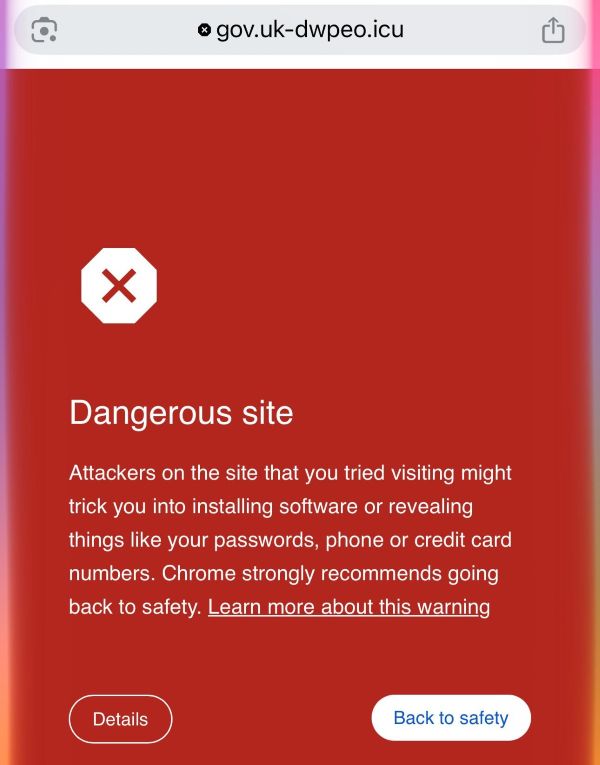
But here’s the kicker: if the scam site has only just gone live, the warnings won’t appear yet. Early victims become the test dummies.
Fake It Till You Make It
If you push on, you’ll see what looks like an official GOV.UK website. Logos, fonts, layout — all cloned.
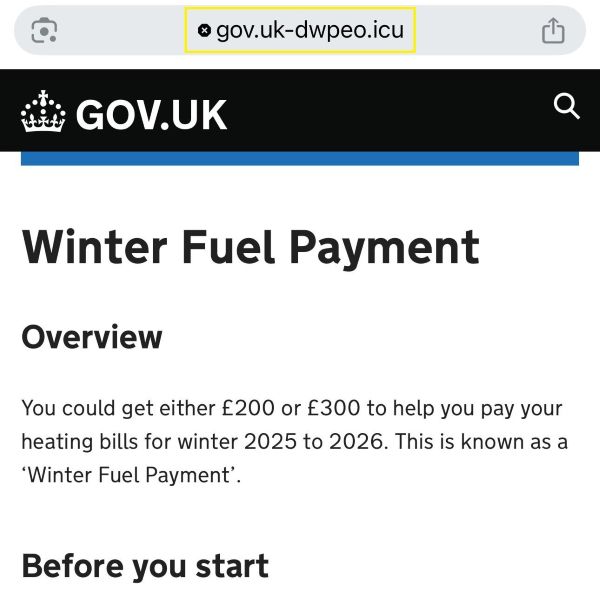
But look at the address bar again: gov.uk-dwpeo.icu.
That’s not GOV.UK, that’s an imposter. They rely on you glancing quickly and missing the difference.
The Hook – Harmless Details First
Next comes the “normal” stuff: name, phone number, email, address.
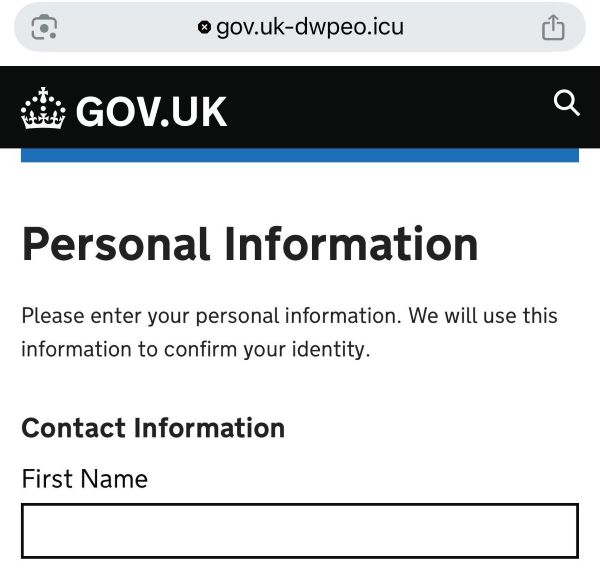
Nothing too scary. Feels safe. But it’s all part of lowering your guard. By this stage, you’re thinking, “Well, they haven’t asked for anything weird yet…”
The Sting – Just £1 to Verify
And here it is: the big ask.
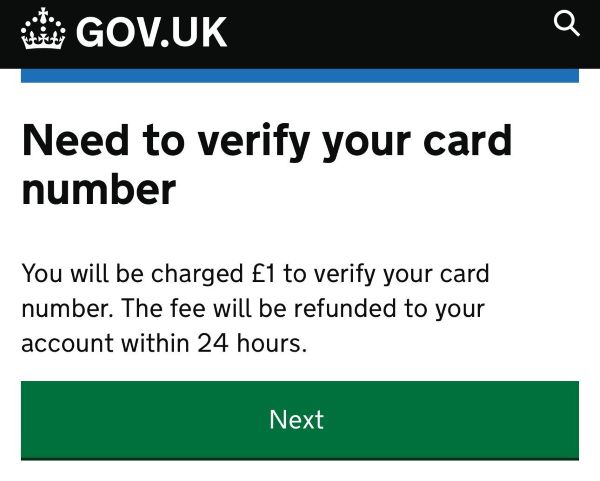
“Just £1 to verify your card. Don’t worry, it’ll be refunded.”
Sounds familiar, doesn’t it? PayPal sometimes does small test charges. But here’s the thing: DWP does not need your card details to verify you to pay you money. Benefits are paid directly into your bank account. No charge, no verification.
This is where the scammer pockets your card details.
Handing Over the Keys
Finally, they want everything: name on the card, number, expiry date, security code.
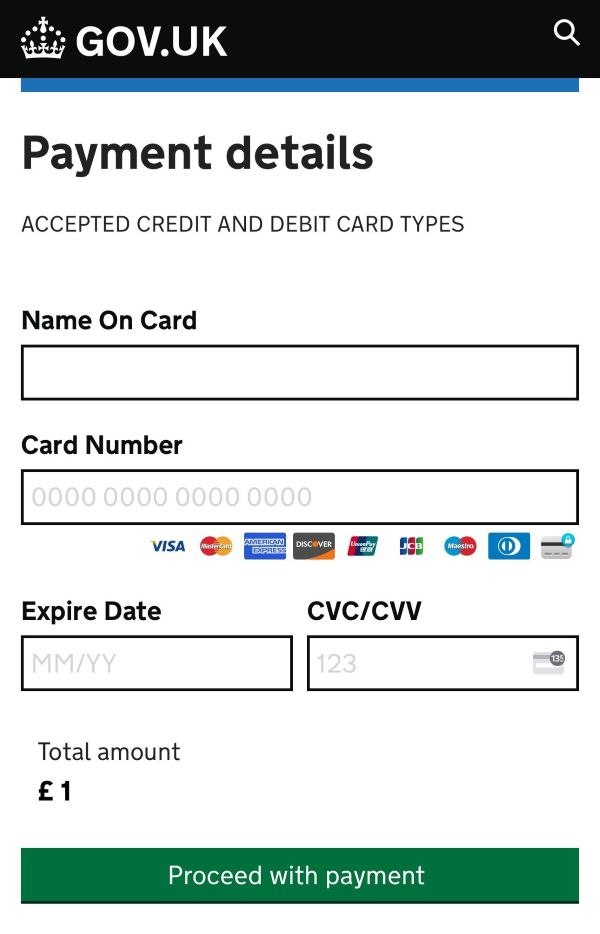
The promise? Just £1. The reality? Maybe it is £1. Maybe it’s £100. Or maybe it’s a spending spree in another country before you even realise your bank account has been drained.
Final Thought
Scams like this aren’t just annoying, they’re designed to exploit people at their most vulnerable. The promise of “free money” is tempting, especially when times are tough. But if something feels off, a weird web address, an unusual request for payment, or a sense of urgency, stop!
At TLMartin Ltd, we’re constantly spotting, analysing, and blocking scams like these for our clients. We put the safety nets in place so you don’t have to second-guess every text or email that lands in your inbox. Because your IT security should protect you, not leave you playing Russian roulette with your bank card.
Stay sharp. Share this with someone who might not spot the signs. And remember: if in doubt, don’t click.
